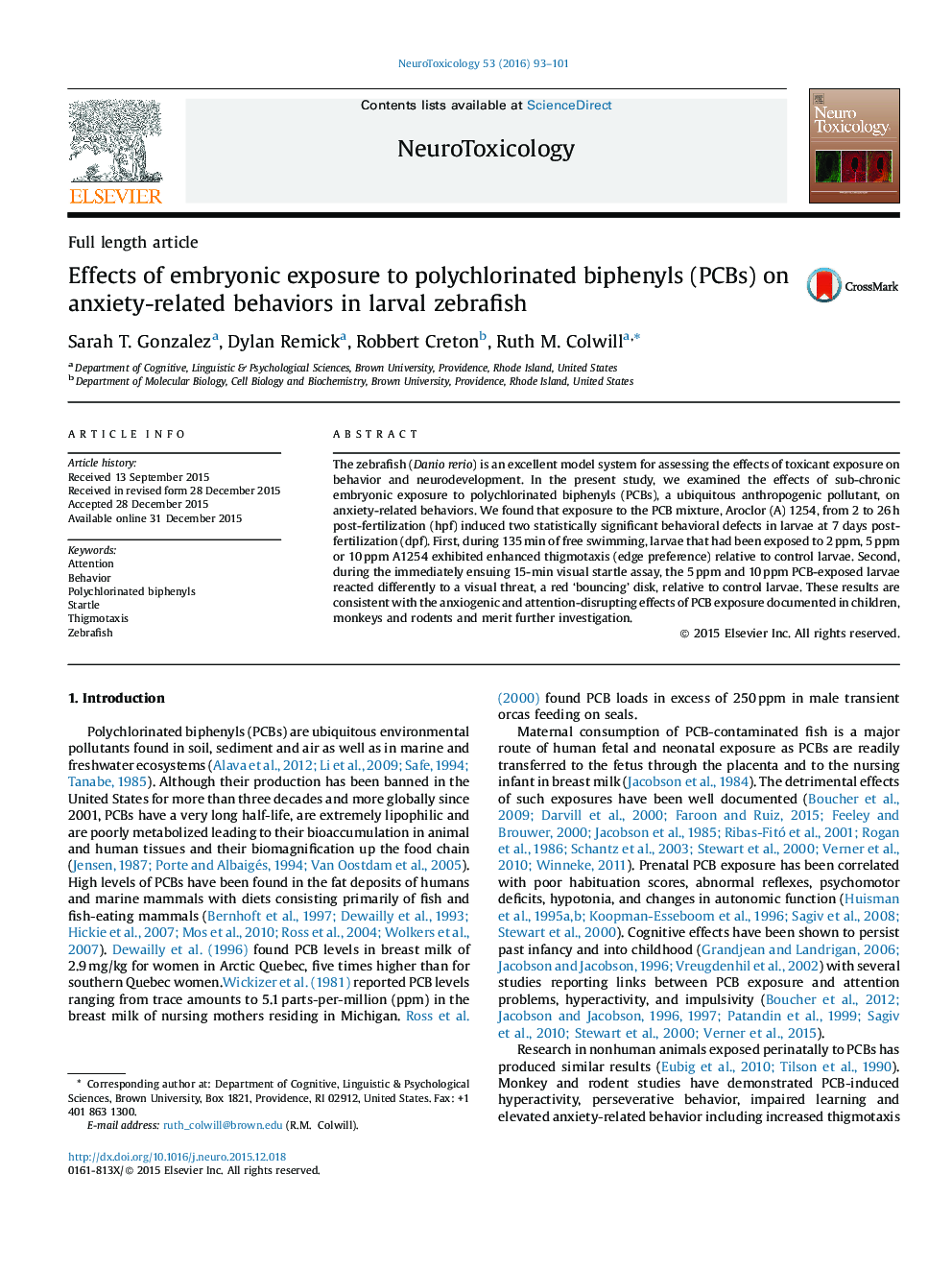| Article ID | Journal | Published Year | Pages | File Type |
|---|---|---|---|---|
| 5854763 | NeuroToxicology | 2016 | 9 Pages |
Abstract
The zebrafish (Danio rerio) is an excellent model system for assessing the effects of toxicant exposure on behavior and neurodevelopment. In the present study, we examined the effects of sub-chronic embryonic exposure to polychlorinated biphenyls (PCBs), a ubiquitous anthropogenic pollutant, on anxiety-related behaviors. We found that exposure to the PCB mixture, Aroclor (A) 1254, from 2 to 26Â h post-fertilization (hpf) induced two statistically significant behavioral defects in larvae at 7 days post-fertilization (dpf). First, during 135Â min of free swimming, larvae that had been exposed to 2Â ppm, 5Â ppm or 10Â ppm A1254 exhibited enhanced thigmotaxis (edge preference) relative to control larvae. Second, during the immediately ensuing 15-min visual startle assay, the 5Â ppm and 10Â ppm PCB-exposed larvae reacted differently to a visual threat, a red 'bouncing' disk, relative to control larvae. These results are consistent with the anxiogenic and attention-disrupting effects of PCB exposure documented in children, monkeys and rodents and merit further investigation.
Related Topics
Life Sciences
Environmental Science
Health, Toxicology and Mutagenesis
Authors
Sarah T. Gonzalez, Dylan Remick, Robbert Creton, Ruth M. Colwill,
